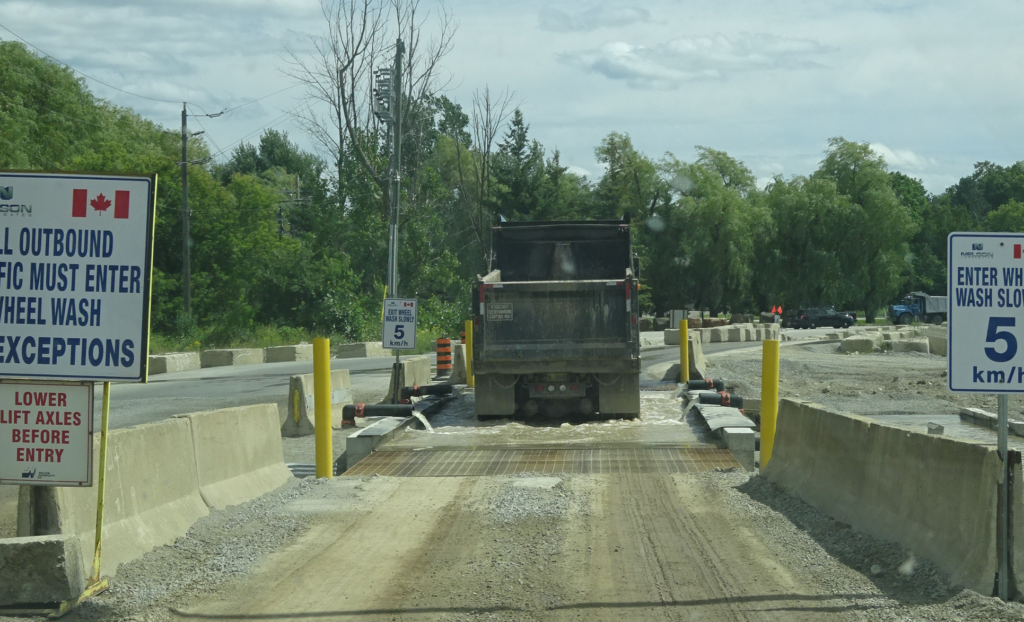August 27th, 2019
BURLINGTON, ON
Exclusive to the Burlington Gazette. Part 2 of a 3 part series.
Nelson Aggregates is quarrying a site between Colling Road and #2 Side Road, west of Guelph Line. They have been doing that for several decades.
In 2004 they applied for a permit to quarry south of the property they were working on and, after a long arduous battle, the issue went to a Joint Administrative Review Tribunal where a three member panel found for the citizens.
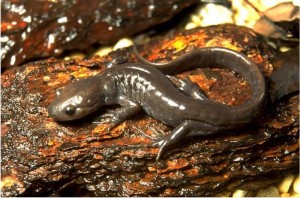
He isn’t exactly pretty but nevertheless plays an important role in the local environment. Comes in different colours as well.
The Tribunal took the position that any work done on the site south of the property they were working on would endanger the Jefferson Salamander.
Nelson Aggregate was stunned at the decision; it was close to the last thing they expected.
The decision meant a major change in their plans and at the time the laying off of a number of employees.
Almost from the day the decision was handed down Nelson Aggregates pulled a team together to review and understand just what their problem was and what they could do about it.
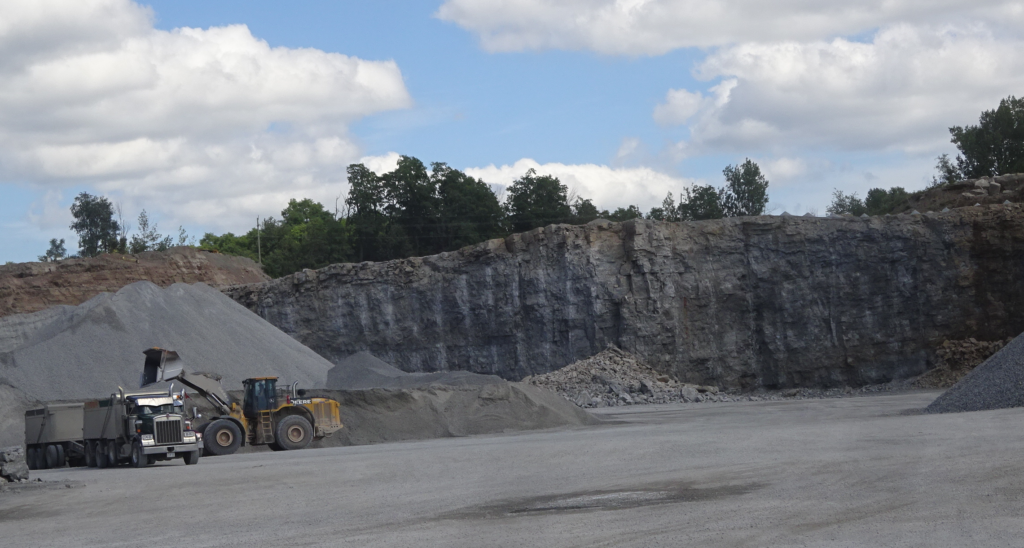
Truck traffic is one of the downsides of any increase in mining capacity. It is a problem and it has to be dealt with – creatively.
The market for quality aggregate was strong and looked to become even stronger. The Nelson site on Colling Road has some of the best stone in the province; that and its location make it a site that Nelson wants to keep in production for as long as possible.
After a considerable amount of research the company learned that the Jefferson Salamander had habitats on the eastern side of the south property but nothing on the western side of the site.
Corporately they also decided to seek a license for an even larger site – the Burlington Springs Golf Club.
The company, wholly owned by Lafarge, knew that the properties they wanted to quarry met both the Regional and City of Burlington bylaws and complied with Niagara Escarpment regulations.
Burlington adopted an Official Plan in 2018 which the Regional government sent back for some minor changes but told the city that they were not limited to correcting just a few minor problems – they were free to totally revise their Official Plan if they wished.
Nelson believes they are in compliance with the Official Plan that is in force now and that they will be in compliance with the adopted plan when it is made official.
Public opinion is going to be a major factor in this new application. The company decided they would make the city an offer they believed couldn’t be refused – give them all the land once the quarry work was done in about 30 years which many saw as a “pig in a poke”.
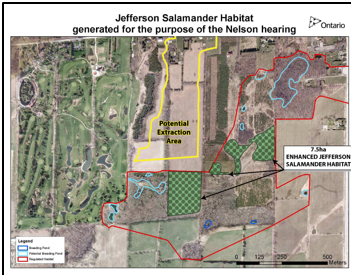
The yellow outline is the part of the property that will be quarried. The red outline is where the Jefferson Salamander does his thing – Nelson has already done considerable enhancement work to that part of the property.
The land, 946 acres in total, would be transferred in several phases. The first will be the 119 acres in the eastern side of the property south of #2 Side Road. This is property where the Jefferson Salamander has habitat and cannot be mined. Nelson has already done remediation work to make it more habitable for the Salamander and expect to do more before any transfer takes place.
The most recent statement from Nelson Aggregates is that the land would be transferred the day all the necessary bylaws and agreements are in place.
Nelson said they would turn over 119 acres immediately, then turn over an additional 77 acres in +/- ten years, then 144 acres from the quarry that is nearing its end of life and finally 606 acres in 30 years when the golf course property meets its end of life
The deal is that the city would have a site that did have some Salamander habitat on it but that those would be clearly identified; there would still be space the public could use. That would happen the day the bylaws were signed.
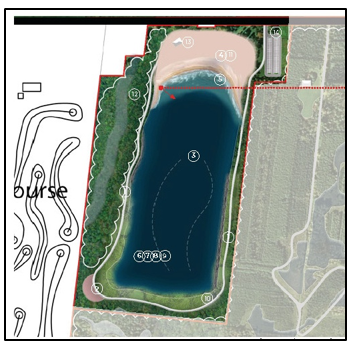
It will become a lake when the quarrying is done – in about seven to ten years. The lake will be the size of 30 football fields with a surface slope that has space for those who just want to play in the water.
The next piece of the pie would become available in about seven to ten years and that would be a lake about the size of 30 football fields (77 acres) that would be crafted while the quarrying was being done. There would be a large beach area at the north end, then a shallow water level that became a deep end at the southern part.
The next phase would be when the current quarrying is done at the site now in operation – an additional 114 acres would be given to the public.
The last piece would be the 606 acres that are currently golf course land.
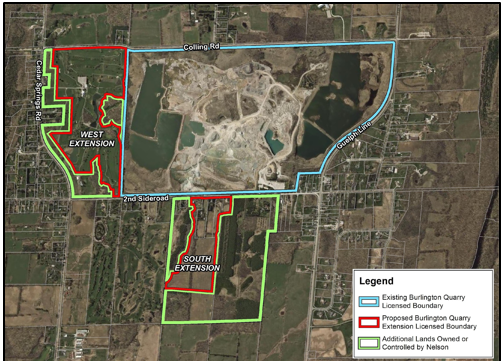
These are the Nelson holdings. The property in the center, outlined in blue is where current quarrying is taking place. The property at the bottom, outlined in green is owned by Nelson. The largest part will be set aside for the Jefferson Salamander, the part in red is where quarrying will take place and when mined out will be turned into a large lake. The property to the left is golf course land on which Nelson has an option.
Those who don’t want any more quarrying argue that the company has to leave the site in a pre-determined condition. True – the company argues that they are adding far more value to the property they are turning over to the city when the deal is signed than called for in their license.
.
They point out, as well, that they are complying with the decommissioning of the site as set out in the license.
Many people are not aware that an aggregate licensing agreement does not have a time limit. With the license in hand the company can mine for aggregate as long as they believe there is stone to be had. Every license has a decommissioning requirement that Nelson shares willingly and are constantly complying with.
During our tour of the site we saw numerous examples of rehabilitation work that had been done and was being done.
We saw a “truck wash” that every vehicle leaving the site was required to drive through to get mud off the wheels and undercarriages of the trucks.
We also saw an unmarked police cruiser parked on the Nelson property in place to look closely at any truck they felt might not meet the road safety standards.
Is what Nelson offering a good deal for the public? It could be.
It is certainly a good deal for Nelson – and after all that is the business they are in and there is a need for quality aggregate.
Is there more than could be done? It would be great if Nelson could find people with open minds and little in the way of vested interests who have a sense of vision and a lot of imagination to sit as an Advisory committee who may not have any clout other than the ability to go public when they have concerns over the direction Nelson is taking.
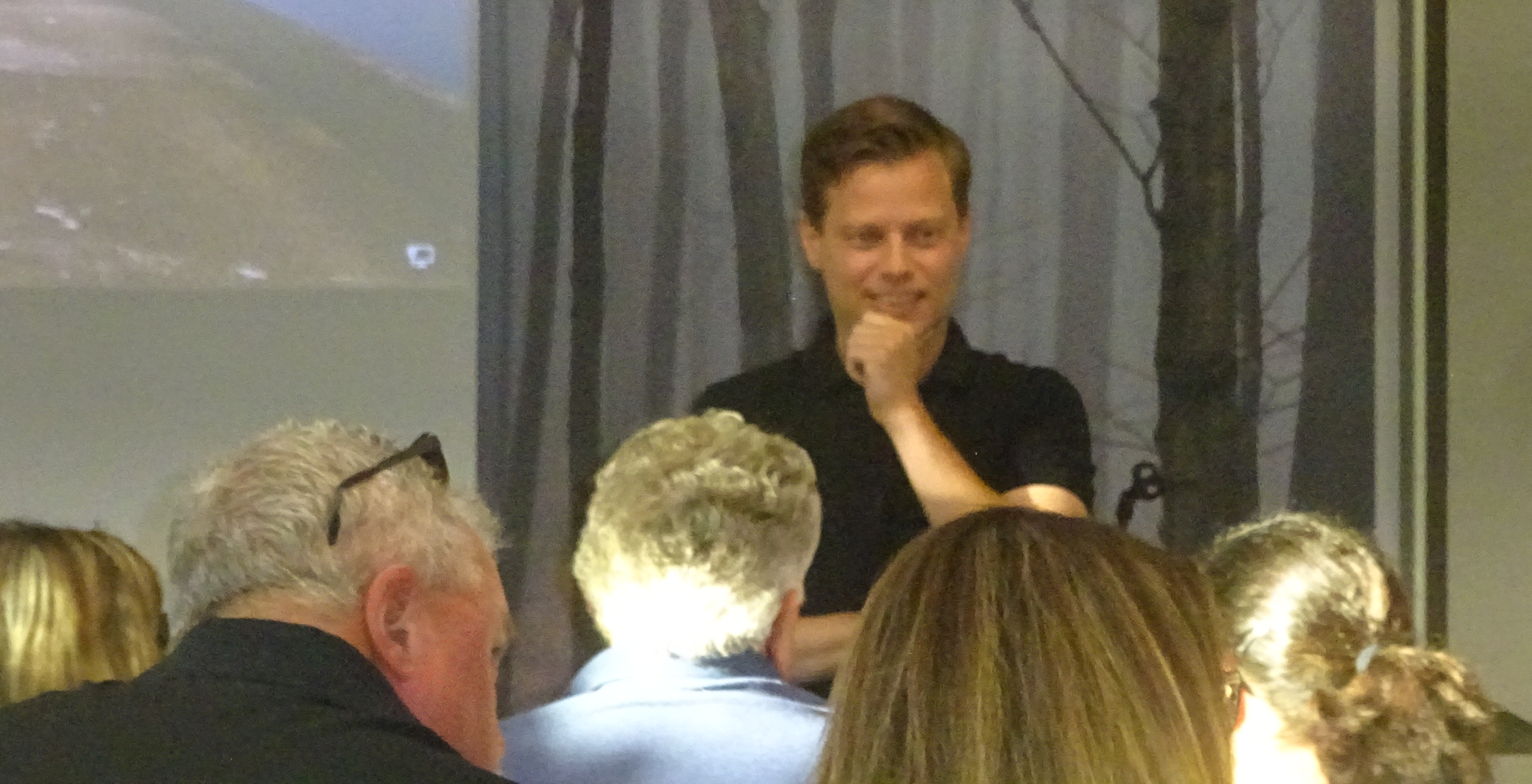
Rory Nisan, the ward Councillor is going to have his hands full placating the rural residents and at the same time looking for the bigger picture where rural Burlington can become a destination for everyone – not something the residents want to hear.
There is a phrase in the lexicon – social license – the degree to which a society will allow change and the degree to which commercial interests will set aside the need for an immediate return on the assets they have so that something bigger and better can be created.
The idea for a Mt Nemo Park is excellent – but there is a lot of work to make it happen and everyone is going to have to adapt.
















